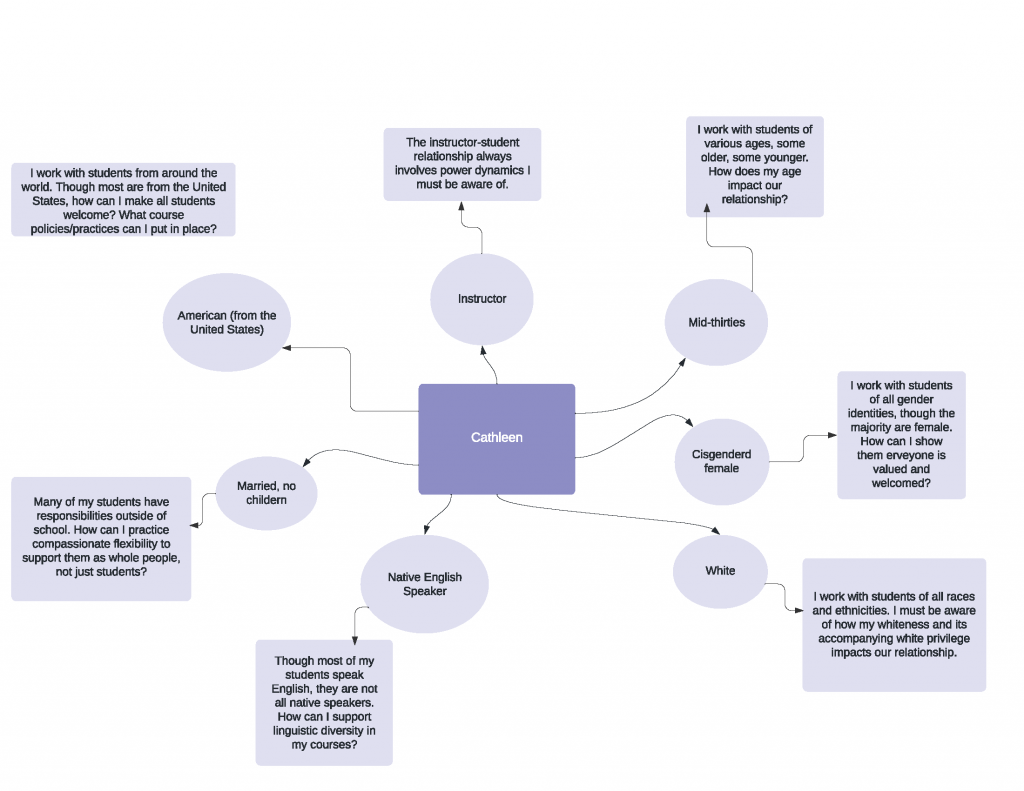2 Self-Identity Mapping
It’s now time to engage in the first main activity of this module: self-identity mapping. In this activity, we’ll each create a visual map of our identity.
Watch the video below to get started.
View captions and a transcript.
Here is an example of an identity map (shown in the video).

Your Turn
Now that you’ve seen an example, take some time to create your own identity map. You can use paper and pencil or an online program. Spend about 15 minutes on this activity. As you create your map, consider the various aspects of your identity. How do those identities intersect? How do they work with or against each other?
Reflect
After you have finished your map, take a few moments to reflect on the following questions.
- How do your various identities intersect?
- Which identity do you think is perceived most when you work with students?
- How does your identity impact your work as an educator?
Summary
Thank you for taking time to reflect on your identity and how it might impact your work with students. Engaging in reflection is a key competency of a culturally responsive educator. Click the Next button in the lower right corner to proceed to the next section.